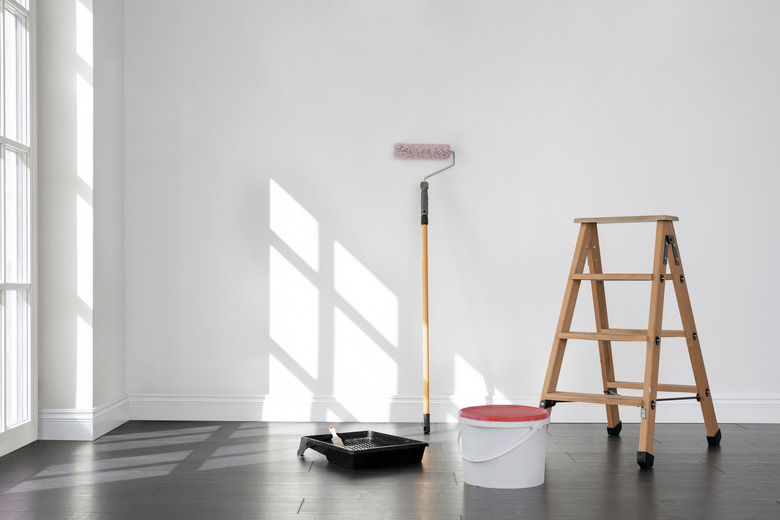How To Paint Plaster Walls
Many designers prefer plaster walls for their hand-applied texture and visual depth that dead-flat drywall simply does not have. While common to many older homes, plaster has also enjoyed a revival in popularity within newly constructed buildings — as a thin coating for plasterboard and as a green design option that involves lime plaster or clay plaster. Whether the plaster is newly installed or generations old, modern homeowners can beautify their walls with user-friendly, water-based paints.
Before You Scrape
Plaster walls in homes built before 1978 may contain residual lead-based paint, which the U.S. Environmental Protection Agency (EPA) regards as a serious health hazard. Do not scrape or disturb old painted surfaces until you have used an EPA-recognized lead testing kit to confirm that the walls are lead free. These inexpensive kits are available at paint stores, hardware stores, and home center outlets. If the test reveals the presence of lead, contact a certified lead abatement specialist or your regional public health department.
Preparing Old Plaster Walls
Plaster walls in older homes often display small dents, dings, cracks, and nail holes that must be filled or smoothed over before a new coat of paint can be applied. Gently scrape off any loose or flaking plaster with a putty knife. Fill small holes and indentations with spackling compound. Wipe off excess material, using a putty knife, until the surface is uniformly smooth. If the hole is somewhat larger, the patch can be reinforced with mesh. Finally, prime the wall with a white-pigmented shellac primer or an alkyd-based stain-blocking primer.
Preparing New Plaster Walls
Newly installed plaster walls should not be primed or painted until the material has dried completely — this usually takes about one month. Gently rough up any shiny or uneven areas with a sanding block, then remove the dusty residue with a tack cloth. The wall can then be primed using a stain-blocking primer, such as a film-forming water-based primer. For greater protection, an alkyd primer or white-pigmented shellac primer penetrates into the plaster surface and forms a tough, protective film for the topcoat to adhere to.
Applying a Quality Paint
Paint for plaster is no different than paint for drywall or most woodwork. For best results, apply an acrylic latex paint using a high-quality synthetic fiber paint brush. Or, use a paint roller that's equipped with a 1/4 to 3/8 inch roller cover. A flat or matte finish paint will help conceal any surface flaws on older plaster walls. An eggshell or semi-gloss paint will provide a washable surface for newer plaster that also resists abrasion and scuffing. In most cases, you can apply a second coat of paint two hours after applying the base coat. Check the manufacturer's directions for exact re-coat times.
